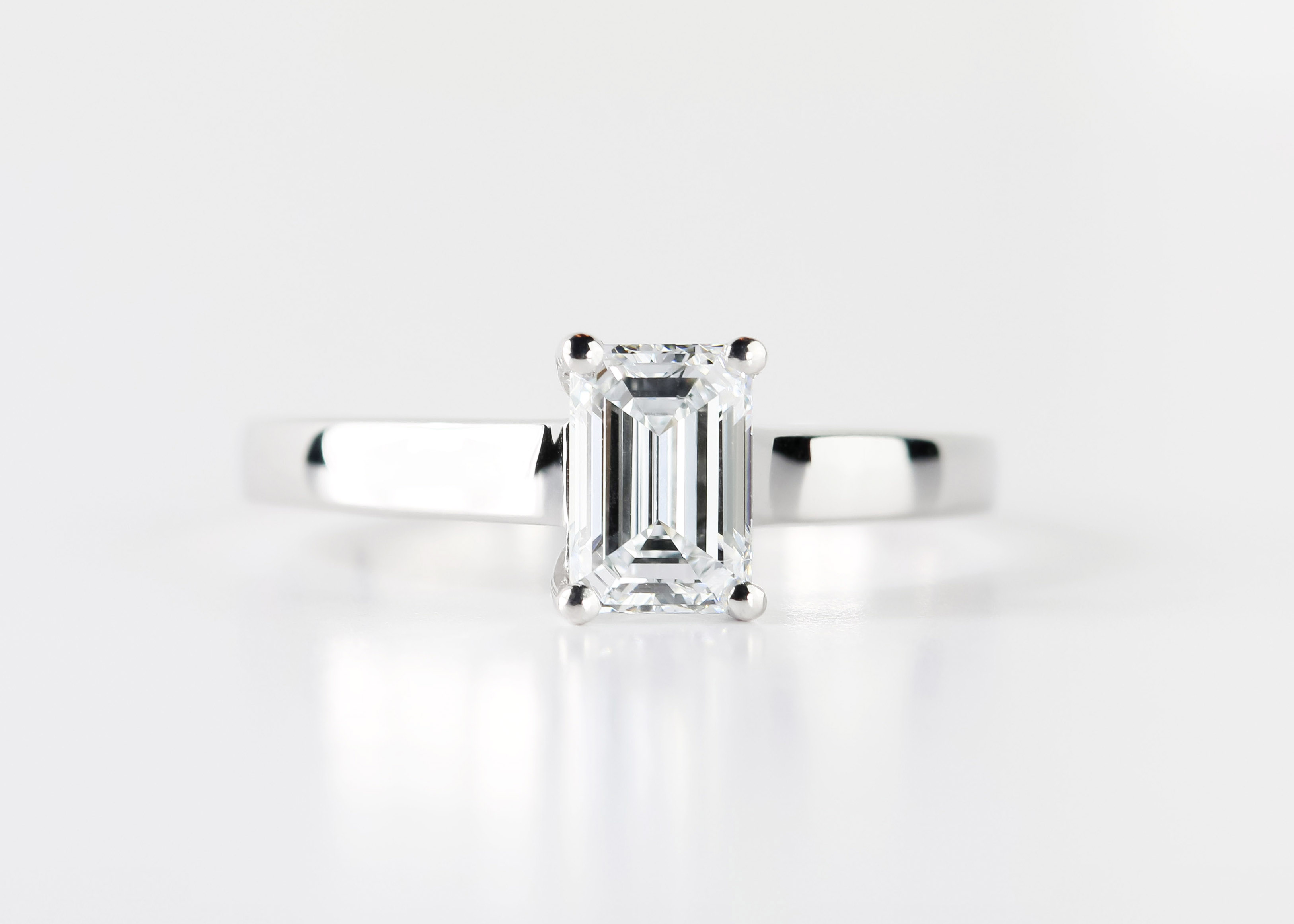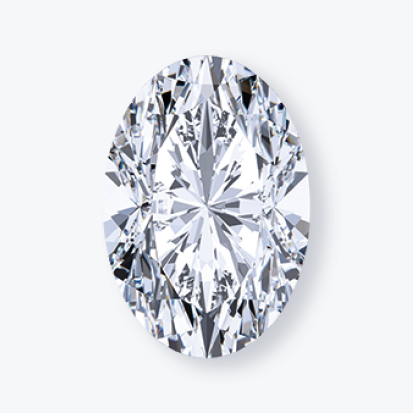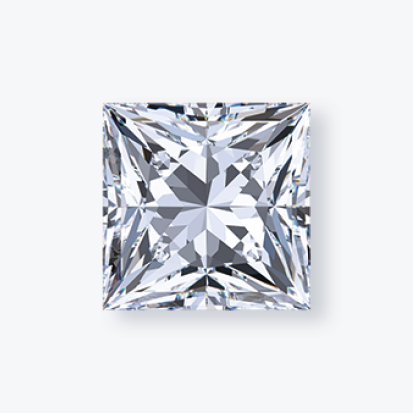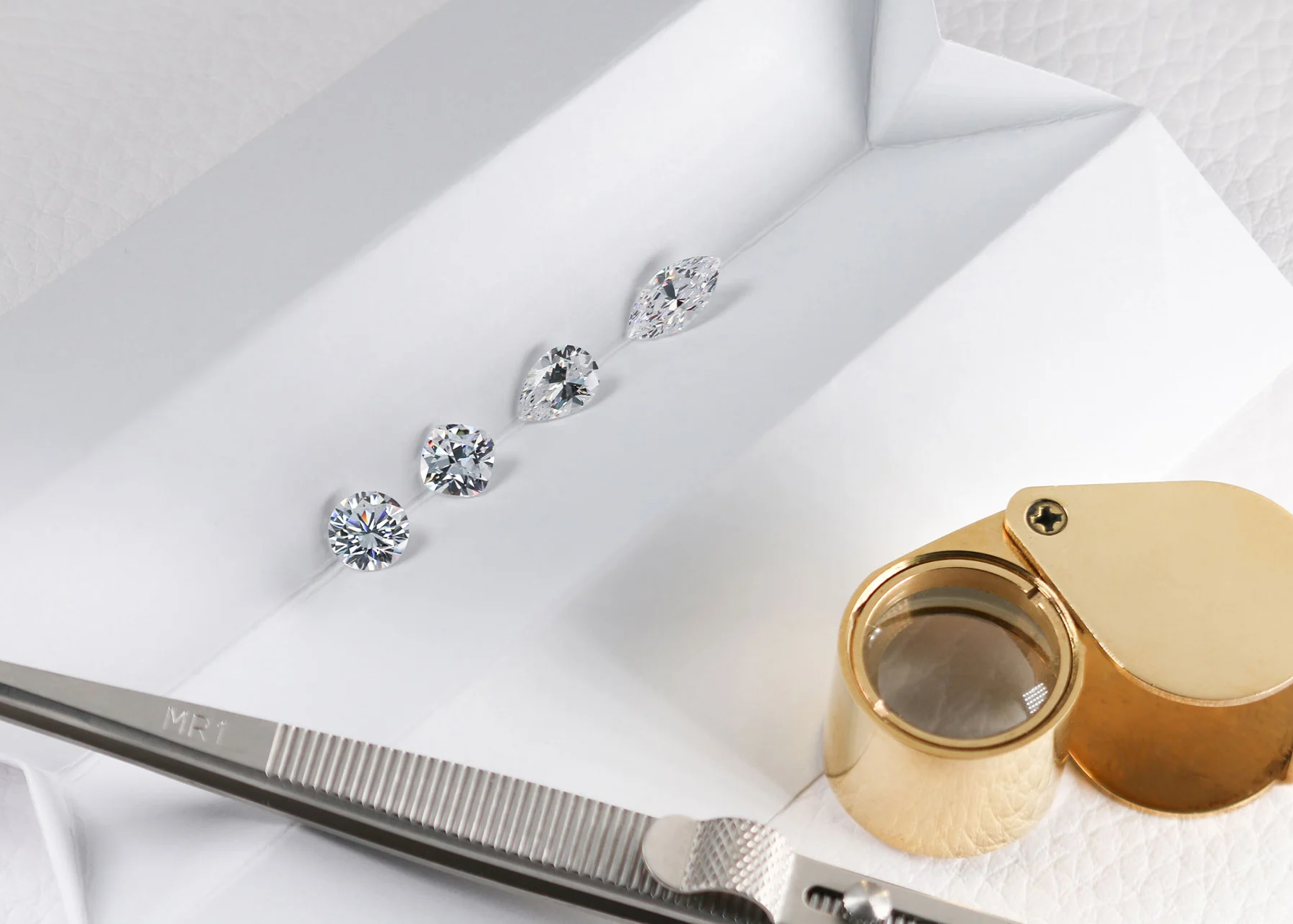Diamond Shapes


What is a Brilliant cut diamond?

What is a Step cut Diamond
What are the different diamond shapes?
Diamond Shape Vs Diamond Cut
The terms "diamond shape" and "diamond cut" refer to different aspects of a diamond's appearance and quality, and they are often confused but are distinctly different:Diamond Shape: This term refers to the outline or form of the diamond when viewed from above. Shapes can vary widely, and some of the most popular include round, princess, oval, emerald, marquise, pear, cushion, and heart. The shape of a diamond is a matter of personal preference and style.
Diamond Cut: This term refers to the quality and precision of the diamond's facets, angles, proportions, symmetry, and polish. The cut determines how well the diamond interacts with light, affecting its brilliance, fire, and scintillation. A well-cut diamond will reflect and refract light optimally, resulting in a dazzling appearance. The cut is graded by standards such as Excellent, Very Good, Good, Fair, and Poor. It is an important factor in the diamond's overall beauty and value, independent of its shape.
There are two main styles that diamonds are cut, these are "brilliant cut" and "step cut".

Wedding and Engagement Ring Consultations

If you have a query that you don't feel requires an appointment please feel free to WhatsApp us by clicking here

Brilliant Vs Step Cut
Brilliant Cut | Step Cut | |
| Maximum Sparkle: The brilliant cut features numerous facets (typically 58) arranged in a way that optimises light return, making the diamond incredibly sparkly and eye-catching. Popularity and Tradition: The round brilliant cut is the most popular diamond shape, often associated with classic engagement rings. Its timeless appeal makes it a safe, stylish choice. Masking Inclusions: The brilliance and intense sparkle of this cut can help to mask minor inclusions and imperfections, making the diamond appear clearer and of higher quality. Colour Reflection: The way light travels through a brilliant cut diamond can also help to downplay any slight colour tint, often making the stone appear whiter than it is. Modern Appeal: Brilliant cuts are often seen as more modern and fashionable, fitting well with contemporary jewellery designs. | Elegance and Sophistication: Step cut diamonds, such as the emerald and Asscher cuts, exude a refined, classic aesthetic with their sleek, linear facets. This design offers a sophisticated and timeless appeal. Highlighting Clarity: Step cuts have large, open facets that emphasise the stone's clarity. They highlight the diamond's natural transparency, making them ideal for high-clarity stones. Subtle Sparkle: Unlike the intense sparkle of brilliant cuts, step cut diamonds reflect light in broad, mirror-like flashes, offering a more subtle, elegant sparkle. This creates a calm, sophisticated look rather than a fiery brilliance. Vintage and Art Deco Appeal: Step cut diamonds often evoke a vintage or Art Deco feel, making them a perfect choice for those who love antique or vintage-inspired jewellery. Unique Look: Step cuts are less common than brilliant cuts, providing a unique and distinctive appearance. Choosing a step cut can be a way to stand out with a less traditional, more exclusive style. Versatility in Larger Stones: The step cut's structure works particularly well with larger diamonds, as the broad facets and open table can beautifully display the stone's size and natural beauty. |
What diamond shapes look biggest?
















































